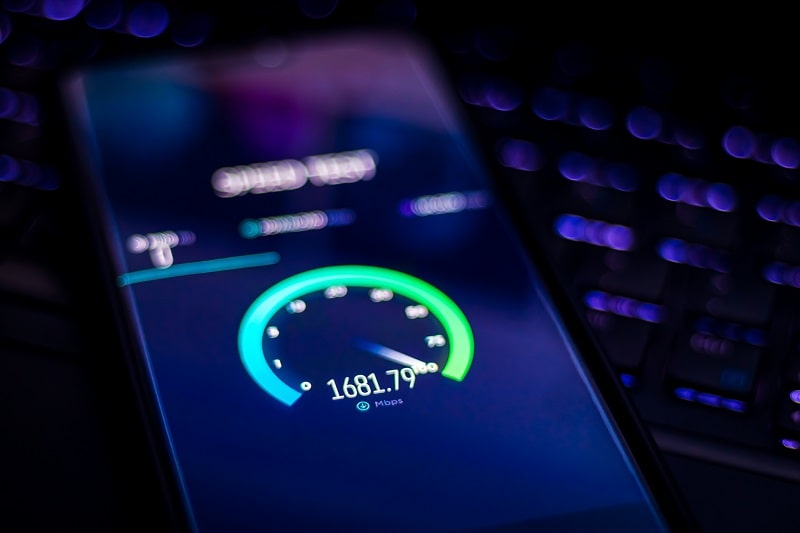In the digital era, where connectivity is as crucial as electricity, choosing the right internet plan is paramount. Whether it’s for streaming, gaming, remote work, or simply browsing, an optimal internet connection can significantly enhance one’s digital experience.
However, the allure of finding cheaper internet in Caledon or a plan promising blistering speeds elsewhere can sometimes lead to hasty decisions. Knowing what to consider before switching can save not just money but also a lot of frustration.
Speed Requirements
Internet speed is measured in megabits per second (Mbps) and directly influences your online experience.
High-speed plans typically offer 100 Mbps or more, which is suitable for intensive online activities across several devices simultaneously. For example, streaming 4K video can consume up to 25 Mbps per stream, while online gaming requires a stable connection with low latency rather than sheer bandwidth.
Households with numerous devices active at once may need speeds exceeding 200 Mbps to avoid buffering and lag. On the other hand, basic activities like web browsing or using social media are less demanding, with 10 to 25 Mbps being ample for a satisfying experience.
The key is balancing the cost against the speed to ensure you’re not overpaying for unnecessary bandwidth or underestimating your needs, leading to a frustratingly slow connection.
Data Caps
Data caps limit the amount of data you can use each month, which is a critical factor for anyone considering a new internet plan. Exceeding these caps results in additional charges or throttled speeds, impacting your internet usage.
Unlimited data plans are ideal for heavy users, such as families streaming movies, playing games online, and connecting smart home devices, as these activities consume significant data.
Monitoring your monthly data usage can help identify the right plan, avoiding the pitfalls of paying for unlimited data when not needed or facing unexpected fees.
Providers often have tools or apps to help track your consumption, making it easier to manage your data usage effectively.
Contract And Costs
Contracts and costs include installation charges, equipment rental fees, and potential rate increases after promotional periods.
Providers often attract new customers with low introductory rates that can increase significantly after the first year.
For those seeking more affordable options, it’s a reminder to understand the full terms of the offer. This includes any early termination fees that could apply if deciding to switch providers before the contract ends.
By thoroughly reviewing contract terms, asking about all potential fees, and comparing different plans, you can discover genuinely cost-effective solutions that match both budgets and needs over the long term.
This can ensure that the cheaper internet in Caledon or elsewhere remains advantageous in the long run.
Reliability
Reliability signifies the consistency and stability of your internet connection. An unreliable service can result in frequent disconnections, slow speeds during peak hours, and frustration.
Factors affecting reliability include the provider’s infrastructure, the technology used (fiber, cable, DSL, satellite), and even geographical location. High reliability is crucial for online work, schooling, or any activity requiring a stable connection.
Evaluating a provider’s reliability involves researching customer feedback, understanding the technology they use, and considering geographical factors that might affect service quality.
Sometimes, paying slightly more for a provider known for reliability can prevent inconvenience and ensure a smoother online experience.
Customer Service
Effective customer service is invaluable, especially when facing internet issues. The quality of customer support can vary widely among providers, impacting your overall satisfaction.
Quick response times, multiple channels for support (phone, chat, email), and helpful, knowledgeable staff are indicators of superior customer service.
Researching online reviews and seeking recommendations from current customers can offer insights into a provider’s customer service quality, helping you choose a provider that values and effectively supports its customers.
Installation And Setup
The process of getting your internet service up and running involves either professional installation by a technician or a do-it-yourself (DIY) kit from the provider.
Professional installation may be necessary for complex setups or when new wiring is required, while a DIY option can be quicker and less expensive for simpler setups.
Some providers waive installation fees as part of promotional offers, so it’s worth asking about installation options and costs.
Consider your technical ability and the complexity of your home network when choosing between professional installation and a DIY approach to ensure a smooth start to your service.
Additional Features And Benefits
Many internet plans come with additional perks that can enhance value and convenience. Access to nationwide public Wi-Fi hotspots can save data on mobile plans, while included cybersecurity software protects against online threats.
Bundling internet with cable TV, landline, or mobile services can also offer savings and simplify billing. Evaluating these extras requires considering your lifestyle and digital needs to determine if they offer genuine value or if they’re simply nice-to-have features.
Prioritizing plans that align with your usage habits and offer relevant extras can maximize the benefits you receive from your internet service provider.
Takeaway
Switching to a new internet plan is not a decision to be taken lightly. It requires a thoughtful evaluation of various factors, including speed requirements, data caps, reliability, contract terms, costs, customer service, installation, and additional benefits.
By carefully considering these aspects, individuals can find a plan that offers a more cost-effective solution and enhances their overall online experience. Ultimately, the goal is to find a balance between cost, convenience, and reliability, ensuring the digital aspects of life are seamless and satisfying.



